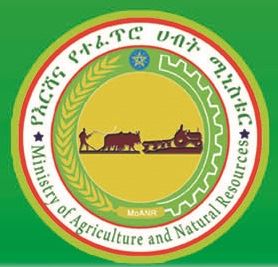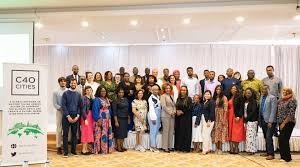
About 30 percent of Ethiopian land was covered by forest in the late 19th century a bulletin published by the Ministry of Agriculture (MOA) indicates. However, currently, it has tampled to 4 percent. There are many factors which caused deforestation in Ethiopia. The government is striving to restore it.
As part of the rehabilitation and restoration process, Prime Minister Abiy Ahmed has launched reforestation initative which aimed at planting more than four billion saplings nationwide by 29 July 2019, marked by the government as a national day of green development.
The Premier has urged Ethiopians to aggressively engage in the reforestation program as forests play pivotal role in combating climate change and enhancing agricultural productivity.
Realizing the severity of climate-change-induced upheavals, Ethiopia has been striving to ensure green environment through planting trees and accomplishing water and soil conservation schemes, said Tefera Mengistu (PhD), Coordinator of Forest Sector Development Program at the Environment, Forest and Climate Change Commission.
He highlights that there is a plan to cover fields and mountains with forests to combat climate change challenges and to improve soil fertility, agriculture produce and productivity. Ethiopia has been vulnerable to El Niño and La Nina catastrophes over the last two decades. Due to this, human and animal lives have been cliamed and as a result the nation has been dependent on foreign aid.
‘‘Forest coverage has direct relations with precipitation. The more forest coverage we have, the more we get sufficient rain. Thus, forests would have massive influence on agriculture productivity,’’ he says. The coordinator added that drought resistant crops and trees have been adopted and adapted to alleviate climate change problems.
The seedling planting program is being implemented in every corner of the country with massive public mobilization. Accordingly, states like Oromia, Tigray, Amhara, Benshangul Gumuz and SNNP are actively engaged in realizing the program.
The Amhara state is one of the states which is expected to undertake active participation in this campaign. It has intended to implant 1.7 billion seedlings this year. Recently, 38,000 seedlings were planted to restore the Semien National Park, some part of which was gutted down by wild fire few months ago. Restoring the the popular national park and statewide campaign of transplating tree seedlings will continue this rainy season in an all-out move, according to Esimelalem Mihret, Forest Development Expert at Amhara Agriculture Bureau.
On the other hand, more than two billion sapplings are set to be transplanted this season in Oromia state, according to Agriculture and Natural Resource Bureau head, Daba Debela. He says that 1.1 billion saplings have been planted and 250 million seedling holes were prepared so far. Public mobilization and intiation are high to achive the envisioned goal, Daba adds.
‘‘On July 29, Abaa Gadas, community elders, higher officials, foreign degniteries, artists, youths, women and men and generally Oromo people from all walks of life will participate. This would push our forest coverage to higher level,’’ he notes. Meanwhile, Tigray state has targeted to plant 80 million seedlings this rainy season, Muez Hailu, Tigray Forest Conversation Director at Tigray Agriculture and Rural Development Bureau said.
‘‘Forest coverage, soil fertility and wild animal conservation had highly deteriorated in Tigray because of many factors. War, deforestation, overgrazing and climate change are among the major factors being noted for the depletion of natural resources,’’ the director points out.
Intensive water and soil conservation works have been implemented since 1970s to rehabilitate barren lands and to restore forest resources of the state and encouraging results have been gained in fighting desertification and drought, according to him.
‘‘Tremedous change was achived on restoring and conserving natural resources in Tigray over the last two decades. Following the remarkable achievement, Tigray has received international award named as ‘The Future Policy Gold Award’ in 2017. The award has motivated us to work more in water and soil conservation, natural resource restoration and protection.’’
Muez reaffirms that farmers, teachers, students, members of defence force, governmental and non-governmental organizations will involve in the seedling planting endavour.Sensitization program is underway for all stakeholders on ways of taking care on the planted seedlings.
Similarly the other states have been planting trees and they will continue to upgared their efforst by July 29, which would be an important day for the nation in restoring natural resources. If so, Ethiopia could rehabilitate its extremely devastated forest and reclaim its green status of the late 19th century. Besides, it would develop the capability of tackling climate change related misfortunes.
The Ethiopian Herald, Sunday Edition July 28/2019
BY TSEGAY HAGOS





